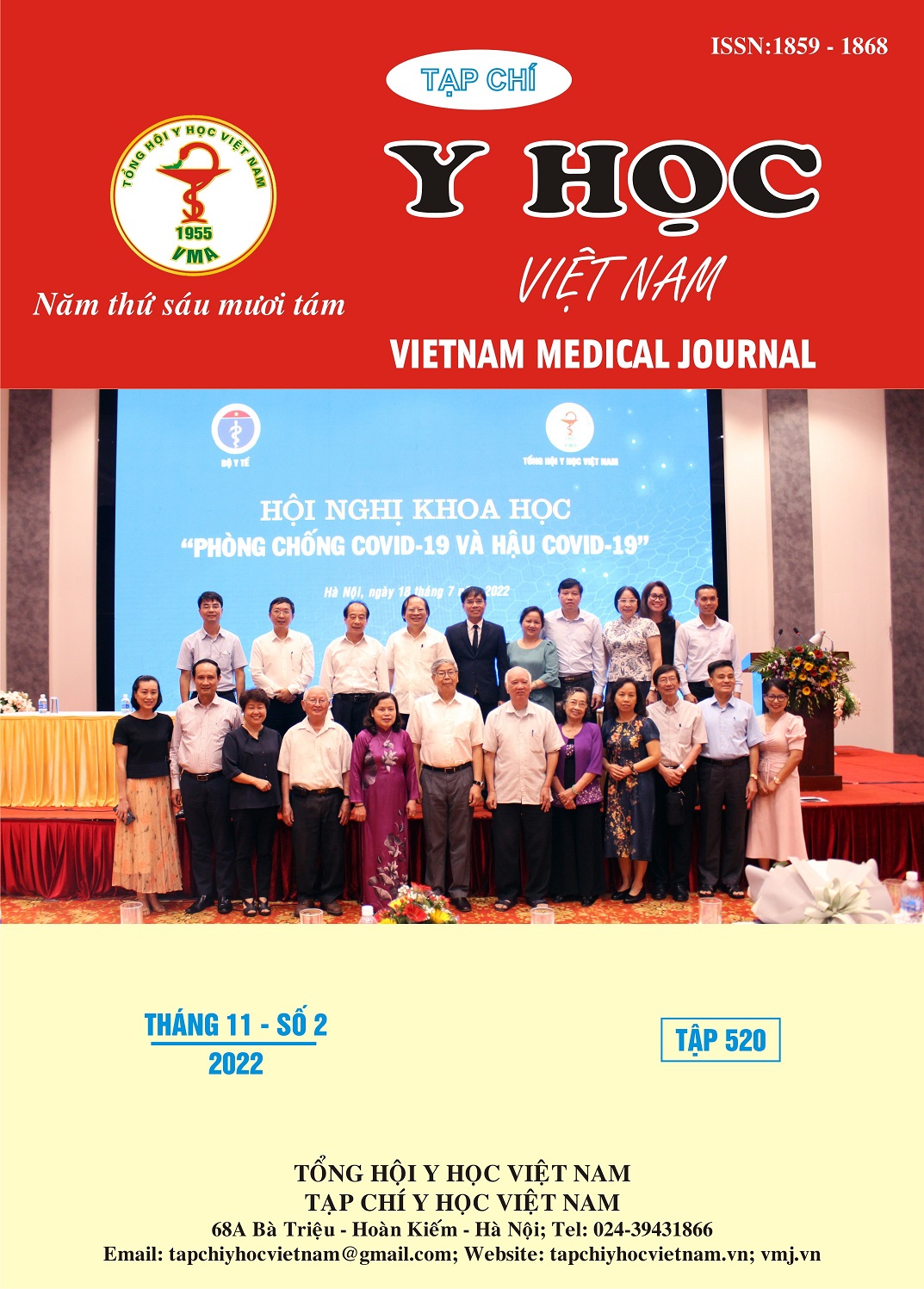CLINICAL AND SUBCLINICAL CHARACTERISTICS OF CHILDREN WITH COMMUNITY-ACQUIRED PNEUMONIA CAUSED BY S. PNEUMONIAE AT HAI PHONG CHILDREN'S HOSPITAL IN 2019-2020
Main Article Content
Abstract
The study was designed retrospectively and descriptively with the following objectives: to describe some clinical and subclinical features of community-acquired pneumonia (CAP) due to S. pneumoniae at Hai Phong Children's Hospital (HPCH) from January 2019 to January 2019. December 2020, and to clarify the in vitro antibiotic resistance properties of this pathogenic bacterium. The study analyzed 208 medical records of CAP with positive pneumococcal cultures. Research results showed that pneumococcal CAP in children was more common in children under 12 months of age, in boys than in girls, in children from suburban areas more than in urban areas. The disease was common in winter - spring with the most common symptoms such as cough, rapid breathing, fine crackles in the lungs, chest X-ray image of bronchopneumonia. Pneumococci causing CAP are still highly sensitive to some antibiotics such as amoxicillin/clavulanic acid, 3rd and 4th generation cephalosporins, carbapenems and 100% sensitive to vancomycin, but resistant to other antibiotics such as macrolide group, co-trimoxazole and pneumococcal oxacillin. Compared with the National Children's Hospital, the rate of severe pneumococcal pneumonia at HPCH was lower.
Article Details
Keywords
pneumonia; children; S. pneumoniae
References
2. Shah BA, Singh G, Naik MA, Dhobi GN. Bacteriological and clinical profile of Community acquired pneumonia in hospitalized patients. Lung India. 2010;27(2):54-57. doi:10.4103/0970-2113.63606
3. Bénet T, Sánchez Picot V, Messaoudi M, et al. Microorganisms Associated With Pneumonia in Children <5 Years of Age in Developing and Emerging Countries: The GABRIEL Pneumonia Multicenter, Prospective, Case-Control Study. Clinical infectious diseases : an official publication of the Infectious Diseases Society of America. Aug 15 2017;65(4):604-612. doi:10.1093/cid/cix378
4. Zhao W, Pan F, Wang B, et al. Epidemiology Characteristics of Streptococcus pneumoniae From Children With Pneumonia in Shanghai: A Retrospective Study. Frontiers in cellular and infection microbiology. 2019;9:258. doi:10.3389/fcimb.2019.00258
5. Quyệt NĐ. Nghiên cứu một số đặc điểm dịch tễ lâm sàng và đánh giá kết quả điều trị viêm phổi do phế cầu ở trẻ em tại Bệnh viện Nhi Trung ương 2015 - 2018. Luận án Tiến sĩ Y học. Viện Sốt rét - Ký sinh trùng - Côn trùng trung ương; 2022.
6. Toikka P, Virkki R, Mertsola J, Ashorn P, Eskola J, Ruuskanen O. Bacteremic pneumococcal pneumonia in children. Clinical infectious diseases : an official publication of the Infectious Diseases Society of America. Sep 1999;29(3):568-72. doi:10.1086/598635
7. Torumkuney D, Van PH, Thinh LQ, et al. Results from the Survey of Antibiotic Resistance (SOAR) 2016-18 in Vietnam, Cambodia, Singapore and the Philippines: data based on CLSI, EUCAST (dose-specific) and pharmacokinetic/pharmacodynamic (PK/PD) breakpoints. The Journal of antimicrobial chemotherapy. Apr 1 2020;75(Suppl 1):i19-i42. doi:10.1093/jac/dkaa082
8. Khoa NT. Thực trạng sử dụng kháng sinh hợp lý và hiệu quả can thiệp tại một số bệnh viện đa khoa tuyến tỉnh. Luận án Tiến sĩ Y học. Viện Vệ sinh dịch tễ trung ương; 2021.


